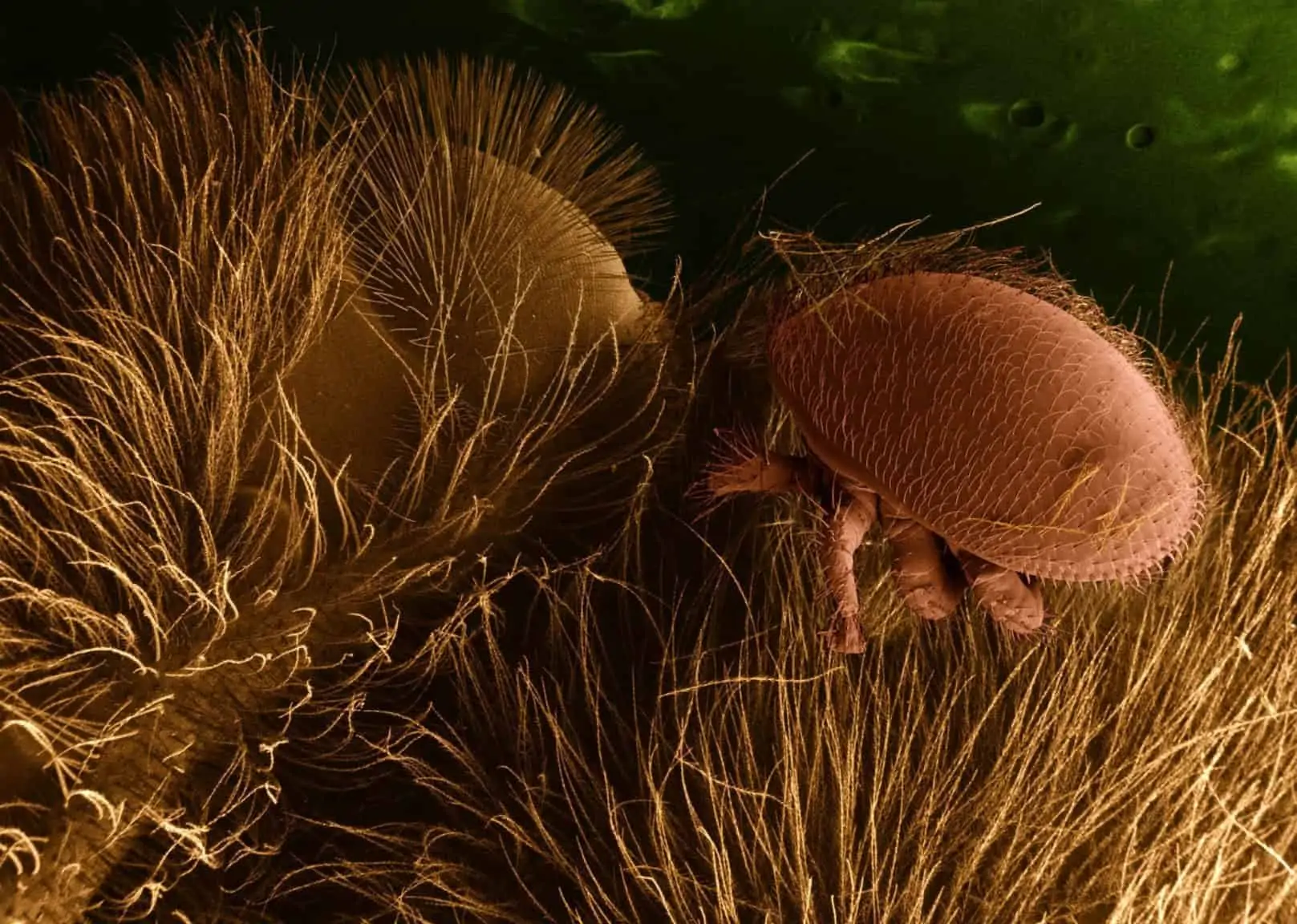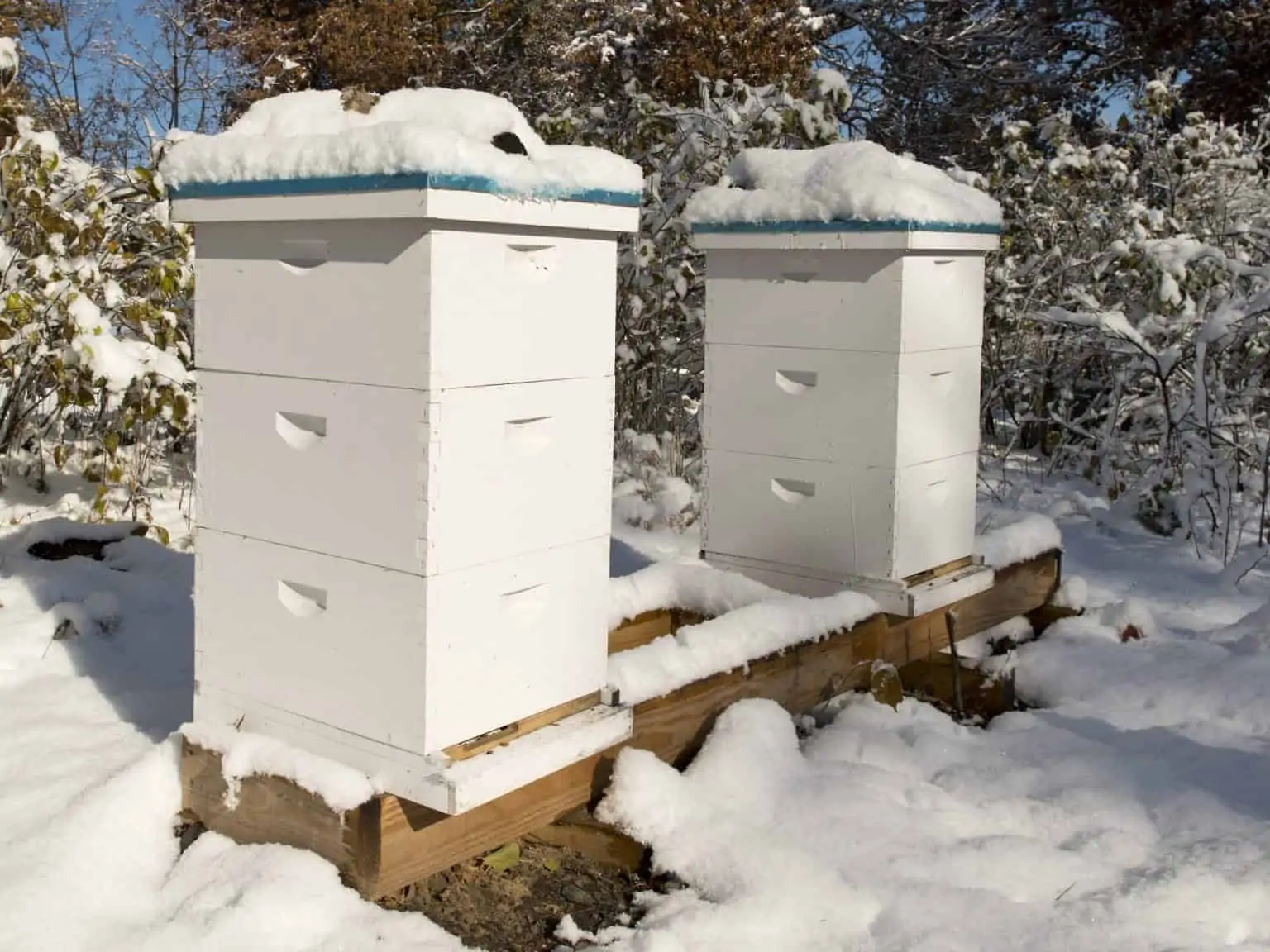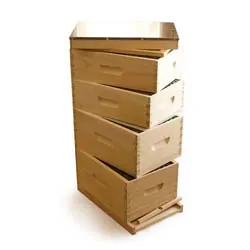Have You Actually Got a Mite Problem?
The season has changed. We’ve moved out of the spring swarm season and are well into summer. The queen is beginning to reduce her egg laying and, as the colonies population declines as we get into fall, the ratio of mites to bees can skyrocket! When it does, there is a very good chance the mites will destroy your colonies. In the north, if you lose your colony in December, it’s almost always due to mites. So what to do?
In previous editions of this column, we touched on the sometimes controversial topic of treatment-free beekeeping. But, regardless of which path you follow, you still need to recognize when there’s a problem.
You need to know what’s going on inside your hive. But why, you ask, if I’m not going to treat? Well, in some ways it’s even more important if you’re not treating. If you have plans to increase (or are just beginning) your own breeding program you need to know which colonies are dealing well with the mites – and which are not. Remember, your best bees come from the ones you raise locally.
Let’s start with checking whether you have a mite problem. Rather than attempt to describe how to do a mite count, take a look at this video from the Oregon State University Honeybee Lab. Study it and decide which approach is best for you.
Personally I prefer the sugar shake method since it does not kill the bees. Carolyn (the woman in the video) has told me there is little statistical difference between the two methods, if each is performed properly. So either way will give you an accurate count. Be sure to put a line on your collection jar that measures one half cup so you know when you have collected enough bees.
IMPORTANT: Make sure you do not collect the queen while collecting bees for your sample. Some beekeepers will shake or brush the bees into a plastic tub first, allowing a second look for the queen before collecting them in the jar. Then they pour bees from the corner of the tub into their collection jar. If you choose the alcohol wash method you do not need to take the bees back home to your freezer as shown in the video. Simply add the alcohol while you are in the apiary.
The Formula: A half cup equals approximately 300 bees. Divide the number of mites you count by 300 and you will get the percentage of mites. For example, 23 mites divided by 300 equals 7.6 percent.
A mite count above 5 percent means your colony could be in trouble.
To Treat or Not To Treat
So, let’s say you DO find a high mites count. Whether to treat your mites is a personal decision.
I’m not here to tell you take one approach over the other. Consistent with the theme of our “Outside the Swarm” column, what I will attempt to do instead is make you aware of some of the variables to assist you in making that decision.
Realistic Expectations for a Treatment-Free Approach
Clearly, this is where the majority of beekeepers want to be and prior to the mite it was not that difficult to practice treatment free beekeeping. Today is different and you need to be aware of some things if this is the approach you choose to take.
If you are committed to being treatment free then its best to simply never treat!. That said…
If you go treatment-free, understand that a lot – and I mean a lot – of your bees are going to die.
The source of your bees has an impact on this.
- If you have purchased bees from commercial stock, they generally do not come from solid breeding programs . They are therefore not tolerant of mites because they receive a high level of treatments and colonies are often requeened every year. Take away the antibiotics and treatments and whatever was being suppressed is going to reappear.
- If you purchased a nuc, the chances are it is likely to die this winter because it already contained mites when you got it.
- If you began with a package of bees you could very well get through the first winter as packages normally do not contain the same level of mites as Nucs. Do not let this lead you to believe you are home free. The majority of packages die the second winter.
What does it all boil down to? Beginning with commercially sold packages or nucs will all but guarantee failure without treatment.
If you were lucky enough to start out with a wild swarm then congratulations. A truly wild swarm obtained from bees already surviving on their own is the best way to begin. However, most people are not that fortunate and must buy their bees to get started. In that case your best chance for success is to find bees raised in a treatment-free breeding program. In other words, their breeding program is built entirely from bees that survive without treatment. There aren’t many, but if you can find one it’s a better way to buy bees.
But I Don’t Want My Bees to Die Every Year – Isn’t There Another Way?
Yes, there is another way.
Just as with the no treatment approach, there are some things you must accept as part of this take on beekeeping. While I will rarely outright tell you what to do, in this case I make an exception.
Do not use the synthetic chemicals commonly available for treating mites.
Remember, as much as 80 percent of the mites in a hive are inside of capped brood. To be effective, these treatments must be left in the hive until all the mites have emerged and have been exposed. Consequently the chemicals must remain in the hive for an extended period of time. This is harmful to your queen (they produce less and die younger) and it’s also been shown that drones reproductive organs are damaged when exposed to these treatments.
These hard chemicals also accumulate in the wax and your bees (including the young larva and your queen) are continually exposed to them. This does not lead to a healthy colony of bees even if it does kill a majority of the mites.
The remaining options are the organics. These occur naturally and are already found in the hive, so you are not adding anything that is not already there. They do not build up in the wax and are often viewed as a “soft” treatment. But let’s keep it real folks, these are still poisons in the form they are used.
There are three organics currently available. One is made up of formic acid. Think stinging nettles and it also occurs naturally in the atmosphere as a forest respiration product. This compound is used in Mite Away Quick Strips. Another organic is Oxalic acid which is common in the plant kingdom – such as rhubarb and spinach. The third is thymol which is a natural antiseptic extracted from the Thyme plant. Thymol is often found in hand sanitizers.
Now let’s take a closer look at each product and how it’s used.
Organic Treatments
Formic Acid
First up are Mite Away Quick Strips, which use Formic Acid as the acaricide. One of the attractions of this product is that it only needs to be in the hive for 7 days. It is a gel based product that evaporates after being placed in the hive and kills both phoretic (mites outside the cell, usually riding on bees) and mites inside capped brood. It leaves no residue and you can leave honey supers on when using it. (though personally I wouldn’t)
The product is very effective but can harm queens and brood (and probably drones) if used when the temperatures are too warm. You should not use it when temperatures will be above 85 degrees. You must also pay attention to the safety warnings and use gloves and a mask when applying it.
I have used this product just a few times with temperatures about 80 degrees and have had excellent results.
Oxalic Acid
This is a new product approved for use in the last year or two, though it’s been used in Europe for quite some time. The product was originally used in a liquid form and poured over frames, but I would never suggest pouring anything wet over your bees for a number of reasons.
Today the product comes in a powder form and you must purchase a vaporizer to use it. The vaporizer is slid into the bottom of the hive, attached to a battery and the powder is vaporized inside the hive. This is very effective and this may be the only thing you ever need to do.
Please note that this product will kill brood. The time to apply (depending on your location) would be Nov/Dec, on a day when it’s not freezing. At this time the queen is not laying so there is no brood to harm and all the mites are exposed. It’s the closest thing you will get to a complete kill of the mites. Remember though thata complete kill is not possible and your realistic goal is simply to control numbers, not try to eliminate the mite.
I tried this for the first time last December. Since then I’ve coupled this treatment with a brood break, which was done in May and my mite counts as of mid July were 0,1 and 1. Very low!
Thymol
The active ingredient comes from the Thyme plant. Thymol is a natural antibacterial and is commonly found in hand sanitizers. For use in bee colonies it is sold in a product called Api Life Var Thymol Strips.
The product claims a high rate of efficacy, up to 95 percent and can be used at temperatures up to 95 degrees. At least that’s what the literature says!
The product comes in wafer form and they are placed inside the hive. The main difference between this product and the other two is that three applications are necessary at 7 to 10 day intervals, whereas the other two are one time treatments.
I personally have no experience with this product so I must rely on the opinion of friends who have tried it – and frankly it’s those opinions that have kept me from using it. Most of them will tell you it’s a bit of a pain to use and making three trips inside each hive being treated gets very time consuming.
What Makes These Mite Treatment Products Different?
All three of these products are based on naturally occurring substances, whereas the synthetics are manmade chemicals. The synthetics are imbedded on a plastic strip the bees walk over and hence pick up a small amount of chemical. This is toxic to both the bee and the mite, but is present at such a level it can kill a bug on a bug.
The three organic products all operate on the basis of a vapor and are corrosive, not toxic. That’s a big difference.
- Toxic requires a sustained period of exposure until the poison can build up enough to kill. Think of lead or mercury poisoning. The extended time period of exposure to the chemical required to kill the mites is why they can build up resistance.
- Corrosive would be like spilling battery acid on yourself. The effect is immediate and this is what happens to the mites.
In summary, the organics are certainly a better approach, but let’s always remember we are putting a poison inside the beehive. With the synthetics a toxic pool of chemicals can build up in the wax and is certainly not good for the bees. On the other hand, the organics may not build up in the wax.
But keep in mind that your favorite queen (and all the others, of course) on which you are planning on building your beekeeping empire has an exoskeleton! That exoskeleton is subject to the corrosive nature of these organic vapors. It’s my understanding the exoskeleton will stand up to only two treatments before it begins to break down and the queen can be harmed.
The point..
You must always take a sensible approach when using these compounds and only apply them when needed.
Speaking plainly, don’t get lazy, forgo the mite count and apply the miticide “just in case”. You never know, you may have just harmed a queen that is producing bees with a high level of mite tolerance.
Winter Bees
“Your bees are fat!”
“Well thank you very much”.
One of the factors contributing to the winter survival of your hives is the health of the bees that raise the winter bees. But “what is a winter bee?”
Winter bees are the ones that live for months instead of weeks. They are the bees that will keep the colony warm throughout those freezing winter days and nights. If these bees are not healthy due to mite load or disease, the chances of your colony surviving the winter are greatly reduced.
In my part of the world the nectar flow normally just gets us to August. The bees reared after the flow are the ones who will raise the Winter Bees. If the bees raising the Winter Bees are not healthy due to mites (or disease) your Winter Bees are not going to be healthy either.
If your mite count revealed a high level of mites there will also be an associated exposure to and risk of disease. It’s just one more thing to consider when deciding whether to treat or not.
- If you are committed to being treating-free, then it’s still good to know if the mite level was high. If your bees survive the winter after experiencing a high mite count, you will know you have a tough little bunch of girls!
- If you are considering using treatments, you now know that a high level of mites will ultimately have a negative impact on the health of the bees expected to see the colony through the winter.
Another thing to consider is feeding your bees pollen if your location experiences a late season dearth. Pollen is fed to larva on the fourth and fifth day and callow bees (bees that just emerged) consume pollen almost immediately upon climbing out from the cell.
Recent studies are showing just how much a healthy balance of pollen can improve the health of a colony. For example, I know of a couple of commercial operations that stopped feeding the antibiotic fumagillin (long used by commercial beekeepers as an annual spring treatment for nosema) and began feeding pollen (real pollen not substitutes) instead. Studies showed that the incidence of nosema was not reduced but that the bees, made healthier by the pollen, were better able to tolerate it.
By feeding pollen, the bees that raise your winter bees will be healthier and therefore your winter bees will as well (DO NOT feed pollen substitutes or supplements).
You will need to find a clean source of pollen (mine comes from the Yukon) and then you must grind it. Bees cannot consume the pollen pellets that are normally sold for human consumption. To protect the pollen from weather, place the ground pollen in the bee yard in a soda bottle that has had one end cut off of it. You will be amazed at how fast the bees consume it!
And what makes those winter bees so different? They have lower levels of hormones, a greater make up of fat bodies, enlarged food glands and their blood has a higher level of sugars and fats. Summer bees are just about the opposite, with higher levels of hormones and lower levels of fat and sugar in their blood. Summer bees live four to six weeks and winter bees live four to six months or longer.
Something to Consider
After discovering a high mite count in one or more of your hives, some of you are probably trying to decide if you should treat or not. While I stand by my original statement that if you want to be treatment-free its best to never start, a lot of you folks are probably new at this and find yourself struggling with what to do.
So let me suggest something.
If you’re a beginner, it’s very difficult to learn the skills necessary to keep bees if they die every year and each spring you find yourself right back where you started. You can repeat that cycle as many times as you want but it will only take your understanding of beekeeping so far.
Treatment free beekeeping has many attractions, but look at this pragmatically. So if this is just your first or second year, you might consider treating mites with the goal being that of furthering your own understanding and education first. Later on you can always make splits, capture wild swarms and even purchase bees with the goal of leaving them to make it on their own without treatment.
It all depends on your goals and only you can decide which is most important to you at this point in time.
If you have questions I’d be very interested in seeing them so please feel free to leave a comment.


